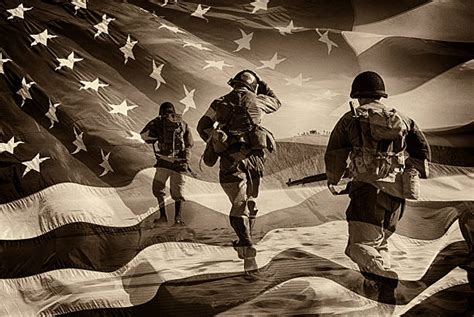Survivor Guilt in First Responders, Military, and Veterans: What It Is, Why It Shows Up, and How We Treat It
If you've ever walked away from a call or a deployment thinking, "Why them and not me?"
you're not broken, and you're not alone. Survivor guilt is a common, human response to tragedy.
In today's language, it often travels with moral injury and PTSD but it can also show up on its own. The DSM-5 recognizes guilt as part of the cognitive/mood symptom cluster for PTSD, and in our community it's something we hear about all the time.
What survivor guilt looks like (in real life)
Folks don't usually say, "I have survivor guilt." They say things like:
Why it happens (the quick, honest version)
Survivor guilt sits at the intersection of three things:
How common is this?
There's no single number for 'survivor guilt,' but we do have solid indicators: The stakes: Family, career, and safety
The stakes: Family, career, and safety
Unaddressed guilt doesn't just make you feel awful; it gets expensive, personally and professionally. We see withdrawn partners, short fuses at home, burnout at work, and a dent in confidence on scene. Studies link trauma-related guilt and moral injury with higher PTSD severity, less treatment-seeking, and elevated suicide risk. Families of vets/first responders also show their own symptom networks, stress doesn't stay in one person. We treat the family system for a reason.
Good news: Guilt responds to treatment
Here's what the research and our experience support:
 How we talk about accountability (without crushing yourself)
How we talk about accountability (without crushing yourself)
At GRIT, we separate responsibility from impossibility. In treatment we slow the story down, line up the facts, your training, policy, resources, and the real constraints of the scene. We challenge "I should have," when it wasn't actually possible, and we work toward an accurate, compassionate after-action narrative you can live with. That's not letting yourself off the hook, it's telling the truth.
What treatment looks like here
Here's the first step: talk to someone who actually knows this world. Whether it's us, a peer team, or your VA clinician reach out. Survivor guilt is treatable. With the right care, the what-ifs get quieter, the second-guessing eases, and you get your edge and your life back.
In today's language, it often travels with moral injury and PTSD but it can also show up on its own. The DSM-5 recognizes guilt as part of the cognitive/mood symptom cluster for PTSD, and in our community it's something we hear about all the time.
What survivor guilt looks like (in real life)
Folks don't usually say, "I have survivor guilt." They say things like:
- "I should've done more."
- "I froze. I'll never forgive myself."
- "I lived. He didn't."
Why it happens (the quick, honest version)
Survivor guilt sits at the intersection of three things:
- 1. Counterfactual thinking: replaying the scene and inventing 'what ifs.'
- 2. Perceived responsibility: taking on more blame than the facts support.
- 3. Moral injury: when what happened violates your moral code: yours, the team's, or the mission's.
How common is this?
There's no single number for 'survivor guilt,' but we do have solid indicators:
- In one VA sample, 41% of trauma-exposed veterans reported past-month guilt, that's not rare.
- Moral injury, where guilt and shame live, shows up meaningfully in first responders; one 2025 study found 18.4% met a threshold for clinically meaningful moral injury.
- Overall behavioral-health burden is higher in first responders than the general population (think depression/PTSD), which is the soil survivor guilt grows in.
 The stakes: Family, career, and safety
The stakes: Family, career, and safety Unaddressed guilt doesn't just make you feel awful; it gets expensive, personally and professionally. We see withdrawn partners, short fuses at home, burnout at work, and a dent in confidence on scene. Studies link trauma-related guilt and moral injury with higher PTSD severity, less treatment-seeking, and elevated suicide risk. Families of vets/first responders also show their own symptom networks, stress doesn't stay in one person. We treat the family system for a reason.
Good news: Guilt responds to treatment
Here's what the research and our experience support:
- Cognitive Processing Therapy (CPT): Actively targets stuck beliefs like 'It was my fault,' and has strong evidence for reducing PTSD and guilt. Multiple trials show improvements in guilt, depression, anxiety, and social adjustment.
- Prolonged Exposure (PE): Helps the brain stop pairing every cue with threat and reduces guilt as people process the story fully and accurately. Case work shows PE/CPT can address moral-injury-based PTSD.
- Trauma-Informed Guilt Reduction (TrIGR): A brief, six-session protocol directly aimed at guilt and moral injury. Recent results show significant reductions in guilt and PTSD, and drops in suicidal ideation for post-9/11 veterans.
- EMDR (Eye Movement Desensitization and Reprocessing): A first-line VA/DoD- recommended therapy that helps reprocess the worst moments and loosen guilt's grip. Evidence in veterans is strong, with durable outcomes in both weekly and intensive formats.
 How we talk about accountability (without crushing yourself)
How we talk about accountability (without crushing yourself) At GRIT, we separate responsibility from impossibility. In treatment we slow the story down, line up the facts, your training, policy, resources, and the real constraints of the scene. We challenge "I should have," when it wasn't actually possible, and we work toward an accurate, compassionate after-action narrative you can live with. That's not letting yourself off the hook, it's telling the truth.
What treatment looks like here
- A tailored track: First responder/military clinicians who understand chain of command, split-second decisions, and the weight of letters and reports.
- Evidence-based therapies: CPT, PE, EMDR, and when indicated, TrIGR-style guilt targeting, delivered in residential, PHP, IOP, and VIOP settings (we follow the VA/DoD Clinical Practice Guideline for first-line care).
- Family involvement: Education and skills for spouses/partners who are carrying the invisible load alongside you. Research shows family members develop their own symptom networks, supporting them supports you.
- Return-to-duty focus: We build the plan around your role; how to step back in quicker, clearer, healthier, and mentally stronger, with skills for the bad days/calls.
Here's the first step: talk to someone who actually knows this world. Whether it's us, a peer team, or your VA clinician reach out. Survivor guilt is treatable. With the right care, the what-ifs get quieter, the second-guessing eases, and you get your edge and your life back.
Magnolia Meadows Residential Treatment Facility provides Treatment exclusive for First Responders & Veterans battling Trauma, Mental Health Conditions and Co-Occurring Disorders, creating a healing atmosphere for recovery, and instill a confident hope that better days are ahead.
Reach out to learn more or speak with an admissions specialist.
855-644-7500
[email protected]

